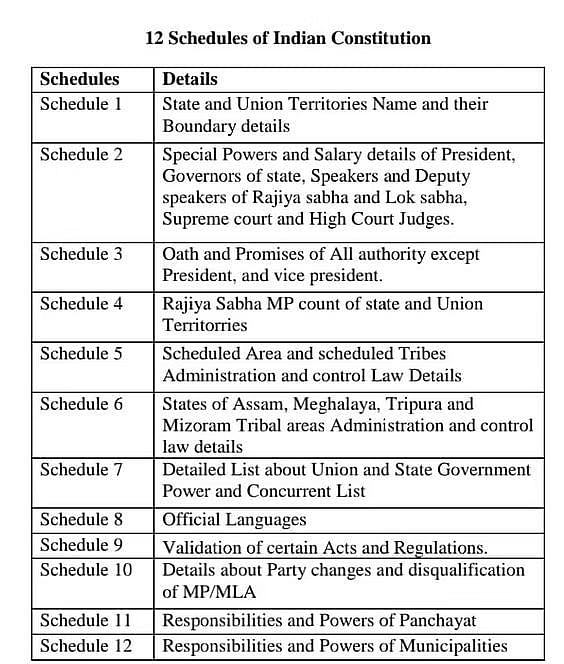Laxmikanth Summary: Municipality | Indian Polity for UPSC CSE PDF Download
Introduction
The term 'Urban Local Government' in India signifies the governance of urban areas by elected representatives chosen by the people. The jurisdiction is limited to a specific urban area demarcated by the state government.
There are eight types of urban local governments in India:
- Municipal Corporation
- Municipality
- Notified Area Committee
- Town Area Committee
- Cantonment Board
- Township
- Port Trust
- Special Purpose Agency
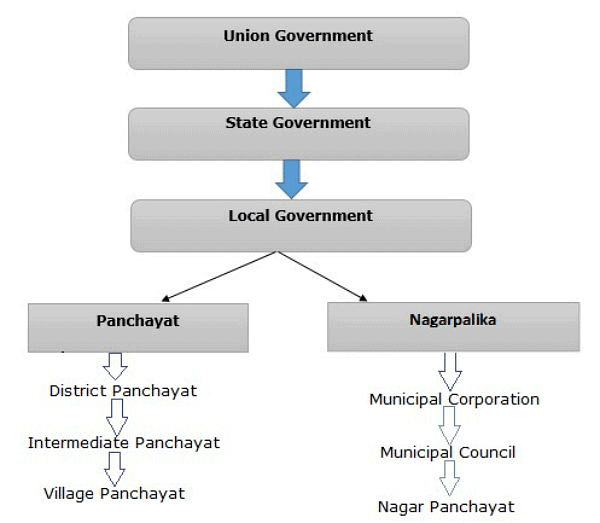 Urban Local Government
Urban Local Government
The system of urban government was constitutionalized through the 74th Constitutional Amendment Act of 1992. At the Central level, the subject of 'urban local government' is managed by three ministries:
- Ministry of Housing and Urban Affairs
- Ministry of Defence (for cantonment boards)
- Ministry of Home Affairs (for Union Territories)
Evolution of Urban Bodies
Historical Perspective
The institutions of urban local government in modern India have their roots in the period of British rule. Key events include:
- In 1688, the first municipal corporation was established in Madras, with the Charter issued on 30th December 1687 and the corporation coming into existence on 29th September 1688.
- In 1726, municipal corporations were established in Bombay and Calcutta.
- Lord Mayo's Resolution of 1870 focused on financial decentralization, envisioning the growth of local self-government institutions.
- Lord Ripon's Resolution of 1882, known as the 'Magna Carta' of local self-government, earned him the title of the father of local self-government in India.
- The Royal Commission on decentralization, chaired by C.E.H. Hobhouse, was appointed in 1907 and submitted its report in 1909.
- Under the dyarchical scheme introduced by the Government of India Act of 1919, local self-government became a transferred subject under the charge of a responsible Indian minister.
- In 1924, the Cantonments Act was passed by the Central legislature.
- Under the provincial autonomy scheme introduced by the Government of India Act of 1935, local self-government was declared a provincial subject.
Committees and Commissions
The Central Government has appointed various committees and commissions to enhance the performance of urban local governments, as outlined in the table below:
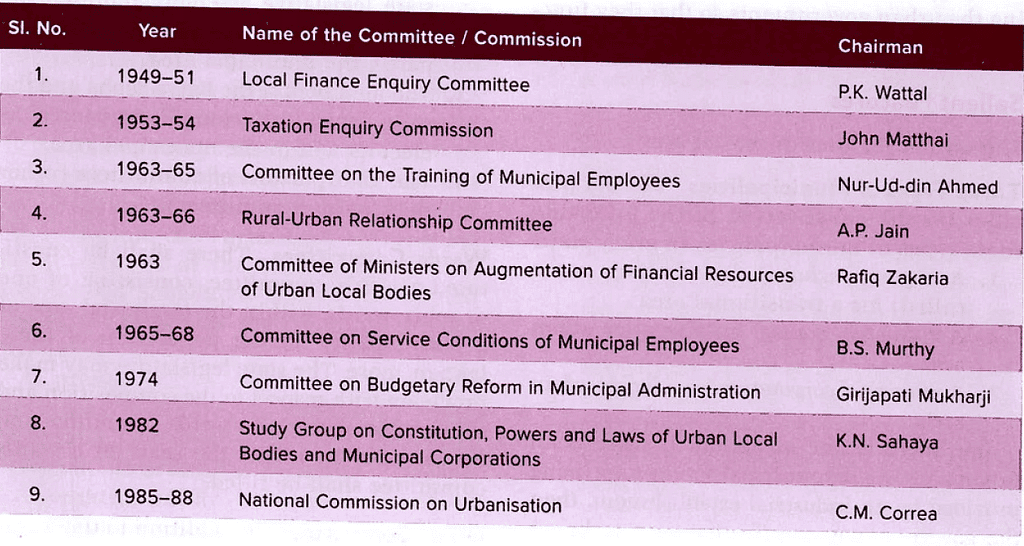 Various Committees and Commissions
Various Committees and Commissions
Constitutionalisation
- Rajiv Gandhi Government: In August 1989, the Rajiv Gandhi government introduced the 65th Constitutional Amendment Bill (Nagarpalika Bill) in the Lok Sabha. The bill aimed to give constitutional status to municipal bodies, strengthening and revamping them. Although passed in the Lok Sabha, it faced defeat in the Rajya Sabha in October 1989, leading to its lapse.
- V. P. Singh Government: The National Front Government, led by V P Singh, reintroduced the revised Nagarpalika Bill in the Lok Sabha in September 1990. Unfortunately, the bill did not pass and eventually lapsed due to the dissolution of the Lok Sabha.
- Narasimha Rao Government: The P V Narasimha Rao Government presented the modified Municipalities Bill in the Lok Sabha in September 1991. This bill eventually transformed into the 74th Constitutional Amendment Act of 1992, coming into effect on June 1, 1993.
74th Amendment Act of 1992
Constitutional Amendment Impact
This Act introduced a new Part IX-A into the Constitution of India titled 'The Municipalities,' encompassing provisions from Articles 243-P to 243-ZG. Additionally, a new Twelfth Schedule was added to the Constitution, outlining eighteen functional items of municipalities, specifically addressing Article 243-W.
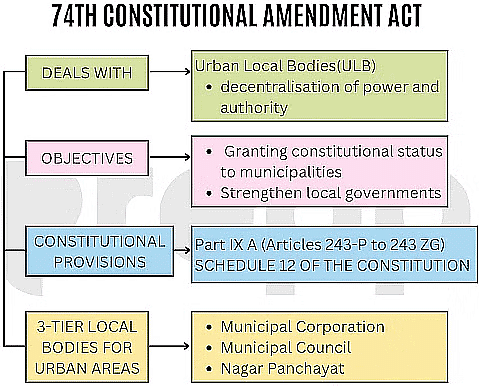
The legislation conferred constitutional status upon municipalities, bringing them within the justiciable realm of the Constitution. In essence, state governments are constitutionally obligated to adopt the new municipal system as per the act's provisions. The primary goal of the act is to rejuvenate and fortify urban governments, ensuring their effective functioning as integral units of local government.
Salient Features of 74th Amendment Act
The salient features of the act are:
Three Types of Municipalities
The act outlines the establishment of three types of municipalities in each state:
- Nagar Panchayat: Created for transitional areas.
- Municipal Council: Formed for smaller urban areas.
- Municipal Corporation: Established for larger urban areas.
However, there is an exception: if municipal services are provided by an industrial establishment in an urban area, the governor may designate it as an industrial township, and a municipality may not be constituted in such a case.
The governor's decision to specify a transitional area, smaller urban area, or larger urban area takes into account factors such as:
- Population of the area.
- Density of the population.
- Revenue generated for local administration.
- Percentage of employment in non-agricultural activities.
- Economic importance.
- Any other factors deemed fit by the governor.
Composition
All members of a municipality are to be directly elected by the people of the municipal area. The municipal area is to be divided into territorial constituencies known as wards for this purpose. The state legislature has the authority to determine the election method for the municipality's chairperson.
The state legislature is also empowered to decide on the representation of the following individuals in a municipality:
- Individuals with special knowledge or experience in municipal administration, without the right to vote in municipality meetings.
- Members of the Lok Sabha and state legislative assembly representing constituencies wholly or partly within the municipal area.
- Members of the Rajya Sabha and state legislative council, registered as electors within the municipal area.
- Chairpersons of committees (excluding wards committees).
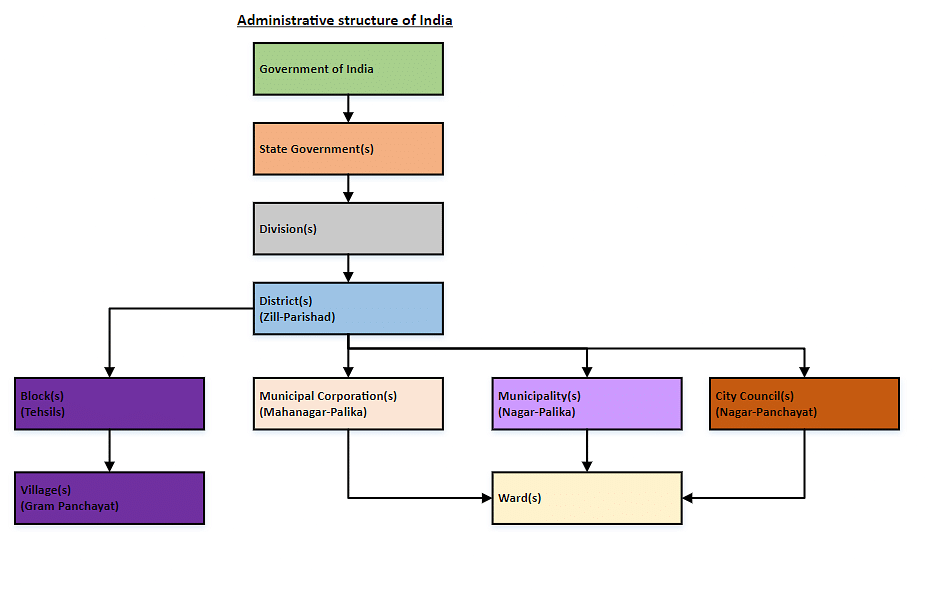 Administrative Structure of India
Administrative Structure of India
Wards Committees
Within the territorial area of a municipality with a population of three lakh or more, a wards committee, comprising one or more wards, shall be established. The state legislature has the authority to determine the composition, territorial area, and the method of filling seats in a wards committee.
Other Committees
Aside from wards committees, the state legislature is also empowered to establish additional committees. Provision may be made for the constitution of these committees, and the chairpersons of such committees may become members of the municipality.
Reservation of Seats
- The act mandates the reservation of seats for scheduled castes and scheduled tribes in each municipality, aligning with their population in the municipal area. Additionally, it ensures the reservation of at least one-third of the total seats for women, including those reserved for women from SCs and STs.
- The state legislature is authorized to establish the manner of reserving offices of chairpersons in municipalities for SCs, STs, and women. Furthermore, provisions may be made for reserving seats or chairperson offices in municipalities in favor of backward classes.
- It's important to note that the reservation of seats and chairperson offices for scheduled castes and scheduled tribes will cease to be effective after the expiration of the period specified in Article 334, presently set at eighty years (until 2030).
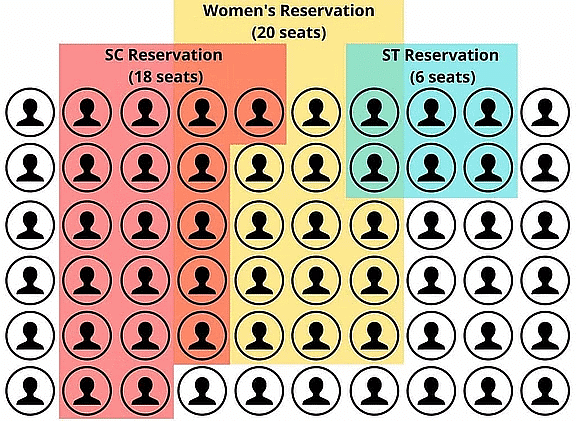 Seat Reservation
Seat Reservation
Duration of Municipalities
- The act stipulates a five-year term for every municipality, starting from its first meeting. However, it can be dissolved before completing its term. Fresh elections to constitute a municipality must be completed either before the expiry of its five-year duration or within six months in case of dissolution. If the remaining period is less than six months, no election is necessary for the new municipality during that period.
- A municipality reconstituted after premature dissolution continues for the remaining period, not enjoying the full five-year term. The act ensures that a municipality must have a reasonable opportunity to be heard before its dissolution, and no amendment to existing laws can cause premature dissolution.
Disqualifications
A person is disqualified from municipal membership if disqualified under state election laws. However, no disqualification arises due to age if the person is at least 21 years old, even if less than 25. Disqualification questions are referred to the authority determined by the state legislature.
State Election Commission
The state election commission oversees the preparation of electoral rolls and conducts elections for municipalities. The state legislature can address all matters related to municipal elections.
Powers and Functions
The state legislature can empower municipalities with necessary authority for self-government, including devolution of powers related to economic development, social justice plans, and implementation of relevant schemes listed in the Twelfth Schedule.
Finances
The state legislature may authorize municipalities to levy taxes, assign state-collected taxes, provide grants-in-aid, and establish funds for crediting municipal funds.
Finance Commission
- For every five years, the finance commission reviews municipal financial positions, making recommendations on principles for distribution, determination of taxes, and measures to improve financial positions. The governor presents commission recommendations and actions taken before the state legislature.
- The central finance commission suggests measures to augment the state's consolidated fund to supplement municipal resources based on state finance commission recommendations.
Audit of Accounts
The state legislature is authorized to establish provisions concerning the maintenance and auditing of accounts by municipalities.
Application to Union Territories
The provisions of this part apply to Union Territories. However, the President can direct their application to a Union territory with specified exceptions and modifications.
Exempted Areas
The act does not apply to scheduled and tribal areas in states, nor does it affect the functions and powers of the Darjeeling Gorkha Hill Council of West Bengal. Parliament may extend these provisions to scheduled and tribal areas with specified exceptions and modifications.
District Planning Committee
- Each state is required to constitute a district planning committee at the district level to consolidate plans from panchayats and municipalities, preparing a draft development plan for the entire district.
- The state legislature can determine the committee's composition, member election, functions related to district planning, and the election of chairpersons.
- The committee's membership consists of four-fifths elected by district panchayat and municipal members in proportion to the rural and urban populations.
- The committee, in preparing the draft development plan, considers common interests between panchayats and municipalities, resource availability, and consults specified institutions and organizations.
- The chairperson forwards the development plan to the state government.
Metropolitan Planning Committee
- Every metropolitan area shall establish a metropolitan planning committee to formulate draft development plans.
- The state legislature has the authority to define:
- The composition of these committees.
- The election process for committee members.
- Representation of the Central government, state government, and other organizations in these committees.
- Functions of the committees concerning planning and coordination for the metropolitan area.
- The process for electing chairpersons for these committees.
- Two-thirds of the committee members should be elected by the municipalities and chairpersons of panchayats in the metropolitan area. Representation of these members should be proportional to the ratio between the population of municipalities and panchayats in the metropolitan area.
- In formulating the draft development plan, the metropolitan planning committee shall consider:
- Plans from municipalities and panchayats in the metropolitan area.
- Matters of common interest between municipalities and panchayats, including coordinated spatial planning, resource sharing, integrated infrastructure development, and environmental conservation.
- Overall objectives and priorities set by the Government of India and the state government.
- The extent and nature of investments expected in the metropolitan area by government agencies, considering available resources, both financial and otherwise.
 Structure of Metropolitan Planning Committee
Structure of Metropolitan Planning Committee
Moreover, the committee is required to seek input from institutions and organizations specified by the Governor. The chairperson of a Metropolitan Planning Committee is responsible for submitting the development plan to the state government.
Continuance of Existing Laws and Municipalities
- All state laws related to municipalities remain in effect until one year from the commencement of this act. States are required to adopt the new municipal system outlined in this act within one year from June 1, 1993, the act's commencement date.
- Existing municipalities at the act's commencement shall continue until the completion of their term, unless dissolved by the state legislature earlier.
Bar to Interference by Courts in Electoral Matters
- The act prohibits court interference in electoral matters of municipalities.
- It specifies that the validity of any law related to constituency delimitation or seat allotment cannot be challenged in any court.
- No election to any municipality can be questioned except through an election petition presented to the authority specified by the state legislature.
Twelfth Schedule
 Twelve Schedules of Indian Constitution
Twelve Schedules of Indian Constitution
The Twelfth Schedule encompasses 18 functional items falling under the jurisdiction of municipalities:
- Urban planning, including town planning;
- Regulation of land use and construction of buildings;
- Planning for economic and social development;
- Roads and bridges;
- Water supply for domestic, industrial, and commercial purposes;
- Public health, sanitation, conservancy, and solid waste management;
- Fire services;
- Urban forestry, protection of the environment, and promotion of ecological aspects;
- Safeguarding the interests of weaker sections of society, including the handicapped and mentally retarded;
- Slum improvement and upgradation;
- Urban poverty alleviation;
- Provision of urban amenities and facilities such as parks, gardens, playgrounds;
- Promotion of cultural, educational, and aesthetic aspects;
- Burials and burial grounds, cremations, and cremation grounds, and electric crematoriums;
- Cattle ponds, prevention of cruelty to animals;
- Vital statistics, including registration of births and deaths;
- Public amenities, including street lighting, parking lots, bus stops, and public conveniences;
- Regulation of slaughterhouses and tanneries.
Types of Urban Government
India has established eight types of urban local bodies for administering urban areas:
- Municipal Corporation
- Municipality
- Notified Area Committee
- Town Area Committee
- Cantonment Board
- Township
- Port Trust
- Special Purpose Agency
Municipal Corporation
- Municipal corporations are established for the administration of major cities such as Delhi, Mumbai, Kolkata, Hyderabad, Bangalore, and others.
- State legislatures enact acts to establish them in states, while the Parliament of India enacts acts for union territories. Each municipal corporation may be governed by a common state act or have a separate act.
- A municipal corporation comprises three authorities: the council, standing committees, and the commissioner.
- The Council serves as the deliberative and legislative wing, including directly elected councillors and nominated individuals with municipal administration knowledge or experience. The composition is regulated by the 74th Constitutional Amendment Act. The Council is led by a Mayor, elected for a one-year renewable term in most states, serving as an ornamental figure and formal head of the corporation. The Mayor's primary role is to preside over council meetings, assisted by a Deputy Mayor.
- Standing committees are formed to streamline the council's operations due to its large size. They handle specific areas such as public works, education, health, taxation, and finance, making decisions within their domains.
- The municipal commissioner, an lAS member appointed by the state government, is responsible for executing the council and standing committees' decisions, serving as the corporation's chief executive authority.
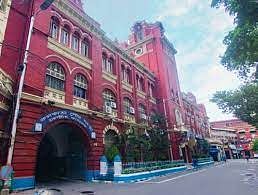 Kolkata Municipal Corporation
Kolkata Municipal Corporation
Municipality
- Municipalities are established for the administration of towns and smaller cities, akin to corporations.
- States enact acts for their establishment, while the Parliament of India enacts acts for union territories.
- Also known by various names like municipal council, municipal committee, municipal board, borough municipality, city municipality, etc.
- Similar to municipal corporations, municipalities comprise three authorities: the council, standing committees, and the chief executive officer.
- The Council is the deliberative and legislative wing, consisting of directly elected councillors. Headed by a president/chairman, unlike the Mayor in a municipal corporation, the president/chairman plays a significant role and holds executive powers.
- Standing committees are established to streamline council operations, dealing with public works, taxation, health, finance, etc.
- The chief executive officer/chief municipal officer oversees day-to-day general administration, appointed by the state government.
Notified Area Committee
- A notified area committee is created for the administration of fast-developing towns or towns not meeting all conditions for a municipality, as deemed important by the state government.
- Established through a notification in the government gazette, it operates under the State Municipal Act, with only notified provisions applicable.
- Functions with powers almost equivalent to a municipality but is entirely nominated, with members appointed by the state government.
Town Area Committee
- Set up for the administration of small towns, acting as a semi-municipal authority with limited civic functions.
- Established by a separate state legislature act, with composition, functions, and other matters governed by the act.
- May be wholly elected, wholly nominated, or a mix of both as decided by the state government.
Cantonment Board
- Established for municipal administration in cantonment areas, governed by the Cantonments Act of 2006 enacted by the Central government.
- Operates under the administrative control of the defense ministry, with 62 cantonment boards categorized by civil population.
- Consists of partly elected and partly nominated members, with functions similar to municipalities and both tax and non-tax revenue sources.
Township
- Established by large public enterprises to provide civic amenities to staff and workers living in housing colonies.
- Administered by a town administrator appointed by the enterprise, with no elected members; an extension of the bureaucratic structure.
Port Trust
- Port trusts are established in port areas like Mumbai, Kolkata, Chennai, etc., for managing and protecting ports and providing civic amenities.
- Created by an Act of Parliament, consisting of both elected and nominated members, with civic functions similar to municipalities.
Special Purpose Agency
- States set up agencies for designated activities or functions typically falling under municipal corporations or municipalities.
- Function-based and not area-based, known as 'single purpose,' 'uni-purpose,' or 'special purpose' agencies or 'functional local bodies.'
- Examples include town improvement trusts, urban development authorities, water supply and sewerage boards, housing boards, pollution control boards, electricity supply boards, and city transport boards.
Municipal Personnel
Municipal Personnel Systems in India
- Separate Personnel System: Each local body has its own system for appointing, administering, and controlling personnel. They are not transferable between local bodies, emphasizing local autonomy and loyalty.
- Unified Personnel System: The state government appoints, administers, and controls municipal personnel. State-wide services (cadres) are created for urban bodies, and personnel are transferable between local bodies in the state. Prevalent in states like Andhra Pradesh, Tamil Nadu, Uttar Pradesh, Rajasthan, Madhya Pradesh, etc.
- Integrated Personnel System: Municipal personnel and state government personnel are part of the same service. Transferable not only between local bodies but also between local bodies and state government departments. No distinction between local civil service and state civil service. Prevalent in states like Odisha, Bihar, Karnataka, Punjab, Haryana, etc.
National Level Training Institutions for Municipal Personnel:
- All-India Institute of Local Self-Government (Mumbai): Constituted in 1927, a private registered society.
- Centre for Urban and Environmental Studies (New Delhi): Established in 1967 based on the recommendation of Nur-uddin Ahmed Committee on Training of Municipal Employees (1963-1965).
- Regional Centres for Urban and Environmental Studies (Kolkata, Lucknow, Hyderabad, and Mumbai): Set up in 1968 based on the recommendation of Nur-uddin Ahmed Committee on Training of Municipal Employees (1963-1965).
- National Institute of Urban Affairs (New Delhi): Established in 1976.
- Human Settlement Management Institute (New Delhi): Established in 1985.
Municipal Revenue
Sources of Income for Urban Local Bodies
- Tax Revenue: Includes revenue from local taxes such as property tax, entertainment tax, taxes on advertisements, professional tax, water tax, animal tax, lighting tax, pilgrim tax, market tax, toll on new bridges, and additional cesses like library cess, education cess, beggary cess, etc. Property tax stands out as the most significant tax revenue.
- Non-Tax Revenue: Comprises income from rent on municipal properties, fees, fines, royalty, profits, dividends, interest, user charges, and miscellaneous receipts. User charges involve payments for public utilities like water, sanitation, sewerage, etc.
- Grants: Various grants provided by the Central and State Governments for development programs, infrastructure schemes, urban reform initiatives, etc.
- Devolution: Involves the transfer of funds from the state government to urban local bodies, based on the recommendations of the state finance commission.
- Loans: Urban local bodies raise loans from the state government and financial institutions to cover their capital expenditure. Borrowing from financial institutions or other bodies requires approval from the state government.
Central Council of Local Government
Central Council of Local Government
The Central Council of Local Government was established in 1954 under Article 263 of the Constitution of India through an order by the President of India. Originally named the Central Council of Local Self-Government, the term 'self-government' was later replaced by 'government' in the 1980s. Initially, it dealt with both urban and rural local governments until 1958, after which its focus shifted exclusively to matters of urban local government.
As an advisory body, the Council comprises the Minister for Housing and Urban Affairs in the Government of India and the ministers for local self-government in states, with the Union minister serving as the Chairman. The Council undertakes the following functions related to local government:
- Consideration and Recommendation of Policy Matters: Deliberates and suggests policy matters.
- Proposal for Legislation: Formulates proposals for legislation.
- Examination of Cooperation: Investigates the possibility of cooperation between the Centre and states.
- Development of Common Programme: Develops a common program of action.
- Recommendation of Central Financial Assistance: Recommends financial assistance from the Central government.
- Review of Local Bodies' Work: Reviews the work done by local bodies concerning Central financial assistance.
 Articles related to Municipality at a Glance
Articles related to Municipality at a Glance
|
145 videos|602 docs|203 tests
|
FAQs on Laxmikanth Summary: Municipality - Indian Polity for UPSC CSE
| 1. What is a municipality? |  |
| 2. What are the key functions of a municipality? |  |
| 3. How are municipalities governed? |  |
| 4. What is the role of a municipality in urban planning? |  |
| 5. How can residents engage with their municipality? |  |

|
Explore Courses for UPSC exam
|

|
